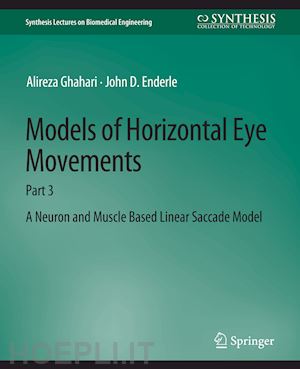Alireza Ghahari received his B.Sc. degree in electrical engineering from the Sharif University of Technology, Iran, in August 2007. Thereafter, he completed his M.Sc. in electrical and computer engineering at the University of Tehran, Iran, in March 2010. During those years of study, he gained valuable insights into systems engineering by taking courses in a variety of contexts, such as statistical signal processing, information theory and coding, computer vision, and pattern recognition. He started his Ph.D. in the ECE department at University of Connecticut in Fall 2010. His dissertation major advisor was Prof. John Enderle. He has come to realize the profound contributions of Prof. Enderle in the field of theoretical and computational neuroscience,and truly considers John to be a major influence, both academically and personally. His research areas of interest include spiking neural networks analysis and implementation, brain-computer interface, and development of computational techniques. John D. Enderle, Biomedical Engineering Program Director and Professor of Electrical & Computer Engineering at the University of Connecticut, received the B.S., M.E., and Ph.D. degrees in biomedical engineering, and M.E. degree in electrical engineering from Rensselaer Polytechnic Institute, Troy, New York, in 1975, 1977, 1980, and 1978, respectively. After completing his Ph.D. studies, he was a senior staff member at PAR Technology Corporation, Rome, New York, from 1979 to 1981. From 1981-1994, Enderle was a faculty member in the Department of Electrical Engineering and Coordinator for Biomedical Engineering at North Dakota State University (NDSU), Fargo, North Dakota. Dr. Enderle joined the National Science Foundation as Program Director for Biomedical Engineering & Research Aiding Persons with Disabilities Program from January 1994-June 1995. In January 1995, he joined the faculty of the University of Connecticut (UConn) as Professor and Head of the Electrical & Systems Engineering Department. In June 1997, he became the Director for the Biomedical Engineering Program at UConn. Dr. Enderle is a Fellow of the Institute of Electrical & Electronics Engineers (IEEE), the current Editor-in-Chief of the EMB Magazine, the 2004 EMBS Service Award Recipient, Past-President of the IEEE-Engineering in Medicine and Biology Society (EMBS), EMBS Conference Chair for the 22nd Annual International Conference of the IEEE EMBS and World Congress on Medical Physics and Biomedical Engineering in 2000, a past EMBS Vice-President for Publications & Technical Activities and Vice-President for Member and Student Activities, Fellow of the American Institute for Medical and Biological Engineering (AIMBE), an ABET Program Evaluator for Bioengineering Programs, a member of the Engineering Accreditation Commission, a member of the American Society for Engineering Education and Biomedical Engineering Division Chair for 2005, and a Senior member of the Biomedical Engineering Society. Enderle was elected as a Member of the Connecticut Academy of Science and Engineering in 2003, with membership limited to 200 persons. He is also a Teaching Fellow at the University of Connecticut since 1998.











